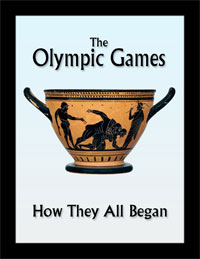
Parthenon Marbles returned: The Parthenon viewed from the Hill of Philopappus. Courtesy Photo Companion to the Bible, Acts.
The Parthenon Marbles are at the center of one of the most intriguing archaeological and legal debates of the past century. While Greece and England play the largest roles in this international drama, other actors have a part to play as well. This was on full display when the Vatican returned three large pieces of the Parthenon Marbles—which had been kept by the Holy See for over 200 years—to the Greek capital of Athens.

The Vatican and the Parthenon Marbles
In a move described as a “gesture of friendship,” the Vatican sent three fragments to Athens, where they will be housed in the state-of-the-art Acropolis Museum. The marble fragments include the head of a horse that was originally shown pulling Athena’s chariot, the head of a bearded man, and the head of a young boy. The Parthenon Marbles consist of friezes and sculptures that once embellished the famous Greek temple to the goddess Athena built atop the Athenian Acropolis in the fifth century BCE.
According to Cardinal Fernando Vergez, Governor of Vatican City, the Vatican acquired its small collection legally in the early 19th century. Pope Francis announced the planned return of the Vatican’s Parthenon Marbles in late 2022, when Greece and England were battling over the status of the better-known marbles housed in the British Museum.

Parthenon relief with three horsemen. Parthenon Marbles retured: The Parthenon of Athen’s viewed from the Hill of Philopappus. Courtesy Photo Companion to the Bible, Acts.
Sidestepping questions of the legal ownership of the marbles, the Vatican called the return a “donation” to the Greek Orthodox Church. The ceremony marking the return was attended by Greece’s Minister of Culture and Sports, Linda Mendoni, the leader of the Greek Orthodox Church, Archbishop Ieronymos II, and the Vatican secretary for promoting Christian unity, Bishop Brian Farrell.
England and the Parthenon Marbles
One of the ancient world’s most famous buildings, the Parthenon stands today as a symbol of Greece’s glorious past, yet many of the decorative elements from this ancient building remain outside of Greek control. With the return of the Vatican’s collection (as well as smaller collections found around Europe) scrutiny has continued to focus on the British Museum, which today houses nearly half of the Parthenon Marbles. The current round of talks between Greece and England regarding the Parthenon Marbles has been ongoing since 2021 but with little progress.
The marbles housed in the British Museum—sometimes referred to as the Elgin Marbles—were acquired by Sir Thomas Bruce, Earl of Elgin, in the early 19th century. With permission from the Ottoman Empire (which at the time ruled over Greece), Bruce removed nearly half of the surviving sculptures from the Parthenon and other buildings on the Athenian Acropolis. Even in his own time, Bruce’s actions were controversial, being likened to looting and vandalism by the famous English poet, Lord Byron.
Despite Greece’s formal request in 1983 to have the marbles returned, the British Museum has yet to take any action. The debate over the marbles has only grown in the last decade, as discussions of artifact repatriation have become mainstream, with the return of thousands of artifacts to countries like Iraq and Egypt, or similar calls for Turkey to return the Siloam Inscription, which was removed from Jerusalem and taken to Istanbul in the late 19th century.
While Greece claims that England has no legal right to these priceless artifacts of Greek cultural history, the British Museum contests that the marbles were obtained legally. Despite news sources claiming Greece has offered to loan other artifacts to England in exchange for the long-term loan of the Parthenon Marbles, the British Museum has denied such reports.
Read more in Bible History Daily:
All-Access members, read more in the BAS Library:
Pan at Hippos: Face of Greek God Unearthed
Not a BAS Library or All-Access Member yet? Join today.The post Vatican Returns Parthenon Marbles appeared first on Biblical Archaeology Society.


0 Commentaires